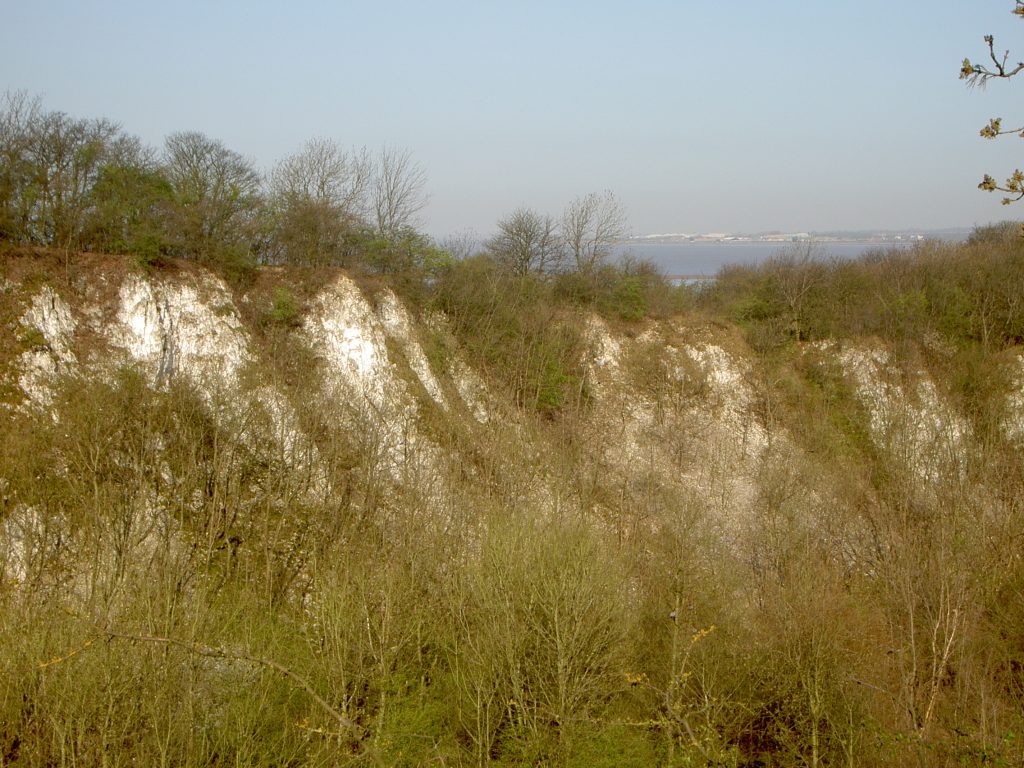
The photo above shows the cliff-face of the long disused ‘New Quarry’ at Barton. Neither the bed of this quarry nor its cliff-face have been disturbed since being abandonned so it is a fine example of natural re-colonisation of a chalk quarry. The ‘New Quarry’ is separated from Barton Cliff Quarry by a narrow ridge of chalk (see photo) left by the developers as a boundary.
At the west end of Westfield Road it is possible to stand and look down the 30 metre cliff-face of Barton Cliff Quarry. The bed of this quarry has occasionally been used as place to tip unwanted material but otherwise the quarry sides and floor remain. As with Leggott’s Quarry (s.p.b.s) Barton Cliff Quarry was a commercial post-enclosure project by the lord of the manor and was begun in 1790. In his Social History and Antiquities of Barton-upon-Humber (1846) Ball records that ‘from forty to fifty thousand tons have been shipped per annum, affording employment for forty men. Many tons of this stone are yearly converted into Whiting at the mills in the town’ (s.p.b.s). By the early 20th century a tramway had been built passing through South Cliff Farm (extant) to a foreshore jetty (now gone). The area between South Cliff Farm and the once jetty is now one of the Humber Estuary’s areas of managed retreat created by the Environment Agency.
Immediately east of Barton Cliff Quarry is the now disused ‘New Quarry’, see above. The view shown above may be had from a public right of way which follows the east side of New Quarry and is well worth exploring. Exploitation of New Quarry was begun in the late 19th century and by 1906 a tramway connected the Quarry floor with the Adamant Cement Works sited on the Humber Bank in 1890. This post-industrial site has been a site of natural regeneration since the cement works closed in the 1920s.
(to be continued).